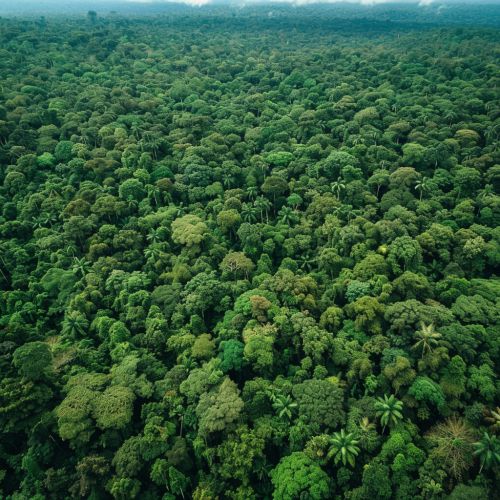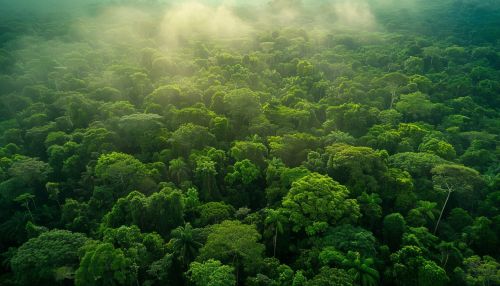Deforestation in Africa
Introduction
Deforestation in Africa is a significant environmental issue that has far-reaching consequences for biodiversity, climate change, and human livelihoods. The continent's forests are home to a vast array of plant and animal species, many of which are endemic and threatened by habitat loss. This article delves into the causes, impacts, and potential solutions to deforestation in Africa, providing a comprehensive and detailed examination of the topic.
Causes of Deforestation
Agricultural Expansion
One of the primary drivers of deforestation in Africa is agricultural expansion. As populations grow and the demand for food increases, forests are cleared to make way for agricultural land. This includes both subsistence farming, where local communities clear forests to grow crops for their own consumption, and commercial agriculture, which involves large-scale clearing for cash crops such as cocoa, coffee, and palm oil.
Logging
Logging, both legal and illegal, is another major cause of deforestation in Africa. The demand for timber and wood products has led to extensive logging activities, often without sustainable practices. Illegal logging, in particular, is rampant and difficult to control, contributing significantly to forest degradation and loss.
Infrastructure Development
Infrastructure development, including the construction of roads, dams, and urban areas, also contributes to deforestation. Roads facilitate access to previously remote forest areas, leading to increased logging and agricultural activities. Urbanization and industrial development require large tracts of land, often resulting in the clearing of forests.
Mining
Mining activities, particularly for minerals such as gold, diamonds, and coltan, lead to significant deforestation. Mining operations often involve the removal of large areas of forest cover, causing habitat destruction and soil erosion.
Fuelwood and Charcoal Production
In many parts of Africa, wood is the primary source of energy for cooking and heating. The collection of fuelwood and the production of charcoal are major causes of deforestation, particularly in rural areas where alternative energy sources are scarce.
Impacts of Deforestation
Biodiversity Loss
Deforestation has a profound impact on biodiversity. African forests are home to numerous species of plants and animals, many of which are not found anywhere else in the world. The loss of forest habitat threatens the survival of these species, leading to a decline in biodiversity. Endangered species such as the African elephant, gorilla, and various bird species are particularly at risk.
Climate Change
Forests play a crucial role in regulating the Earth's climate by absorbing carbon dioxide (CO2) from the atmosphere. Deforestation releases stored carbon back into the atmosphere, contributing to climate change. The loss of forests also reduces the planet's capacity to absorb CO2, exacerbating the greenhouse effect and global warming.
Soil Erosion and Degradation
The removal of forest cover leads to soil erosion and degradation. Trees and vegetation help to stabilize the soil and prevent erosion. Without this protective cover, soils are more susceptible to erosion by wind and water, leading to loss of fertile topsoil and reduced agricultural productivity.
Water Cycle Disruption
Forests play a vital role in the water cycle by regulating the flow of water and maintaining the balance of groundwater. Deforestation disrupts this cycle, leading to changes in rainfall patterns, reduced water availability, and increased risk of floods and droughts.
Impact on Indigenous Communities
Many indigenous communities in Africa depend on forests for their livelihoods, culture, and traditions. Deforestation threatens their way of life by reducing access to resources such as food, medicine, and shelter. It also leads to displacement and loss of cultural heritage.
Case Studies
The Congo Basin
The Congo Basin is home to the second-largest tropical rainforest in the world, after the Amazon. It spans across several countries, including the Democratic Republic of Congo (DRC), Cameroon, and Gabon. The region is a biodiversity hotspot, hosting numerous endemic species. However, it faces significant deforestation pressures from logging, agriculture, and mining. Efforts to conserve the Congo Basin include the establishment of protected areas and sustainable forest management practices.


Madagascar
Madagascar is renowned for its unique biodiversity, with over 90% of its wildlife found nowhere else on Earth. The island's forests are under severe threat from slash-and-burn agriculture, logging, and charcoal production. Conservation initiatives in Madagascar focus on community-based forest management, reforestation projects, and the establishment of national parks and reserves.
West Africa
West Africa, particularly countries like Ghana and Côte d'Ivoire, is a major producer of cocoa. The expansion of cocoa plantations has led to extensive deforestation in the region. Efforts to address deforestation in West Africa include promoting sustainable cocoa production, agroforestry practices, and reforestation programs.
Solutions to Deforestation
Sustainable Forest Management
Sustainable forest management involves the responsible use and conservation of forest resources to meet current needs without compromising the ability of future generations to meet theirs. This includes practices such as selective logging, reforestation, and the establishment of protected areas.
Agroforestry
Agroforestry is an integrated approach that combines agriculture and forestry to create more sustainable land-use systems. It involves the planting of trees alongside crops and livestock, providing multiple benefits such as improved soil fertility, increased biodiversity, and enhanced resilience to climate change.
Community-Based Forest Management
Community-based forest management empowers local communities to manage and protect their forest resources. This approach recognizes the rights and knowledge of indigenous and local communities, involving them in decision-making processes and providing incentives for sustainable forest use.
Reforestation and Afforestation
Reforestation involves the replanting of trees in deforested areas, while afforestation refers to the planting of trees in areas that were not previously forested. Both practices are essential for restoring degraded landscapes, enhancing biodiversity, and mitigating climate change.
Policy and Legislation
Effective policy and legislation are crucial for addressing deforestation. This includes the enforcement of laws against illegal logging, the promotion of sustainable land-use practices, and the implementation of incentives for conservation. International agreements and collaborations, such as the REDD+ program, also play a significant role in combating deforestation.
Conclusion
Deforestation in Africa is a complex and multifaceted issue with significant environmental, social, and economic implications. Addressing this challenge requires a comprehensive approach that includes sustainable forest management, community involvement, reforestation efforts, and strong policy frameworks. By working together, governments, communities, and organizations can help to protect Africa's forests and ensure a sustainable future for the continent.
